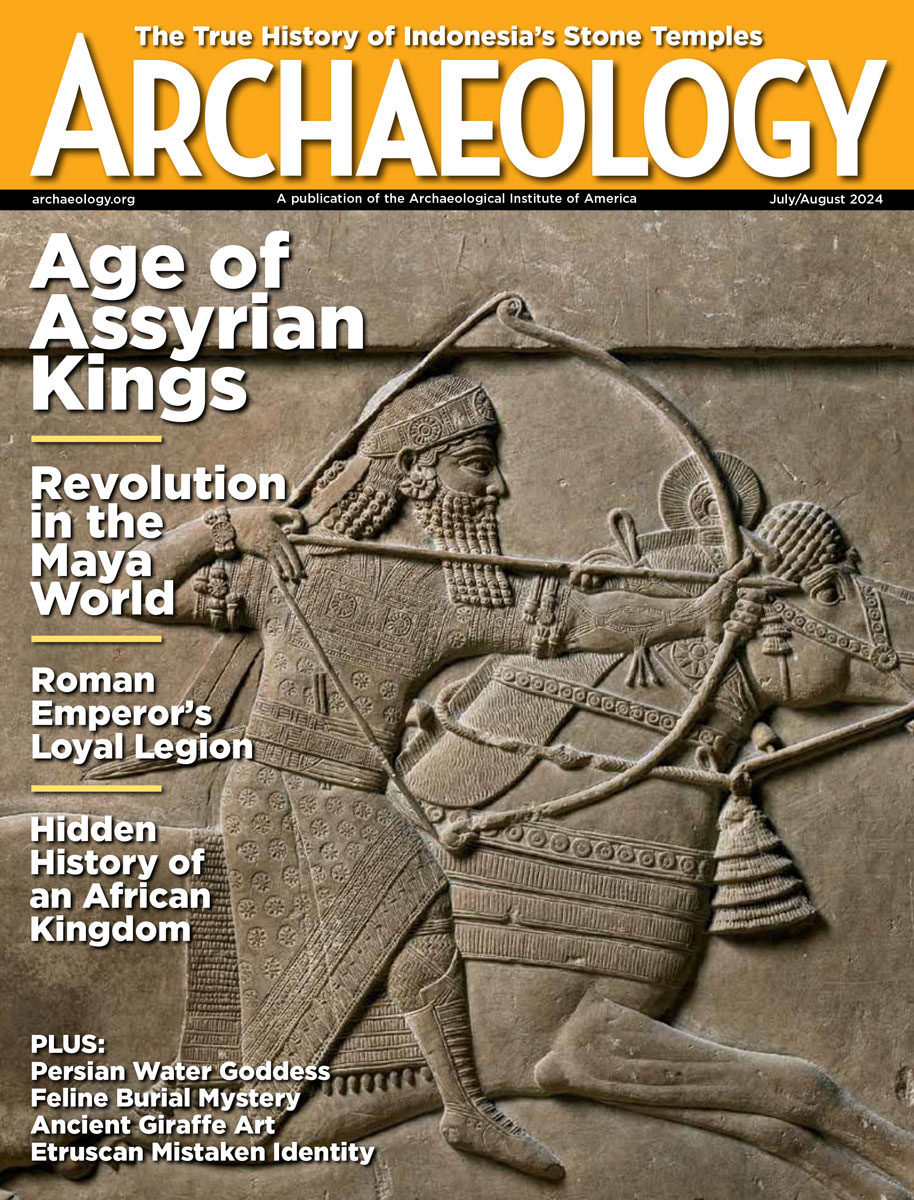Tuesday, August 26
August 26, 2008
 The marble head, right arm, and lower legs of a colossal sculpture of Marcus Aurelius have been unearthed in the Roman baths at Sagalassos, in southern Turkey, where parts of statues of Hadrian and Faustina have also been found. The room was probably a gallery for sculptures of members of the second-century A.D. Antonine dynasty. Look for a full report and photos soon on our Sagalassos Interactive Dig.
The marble head, right arm, and lower legs of a colossal sculpture of Marcus Aurelius have been unearthed in the Roman baths at Sagalassos, in southern Turkey, where parts of statues of Hadrian and Faustina have also been found. The room was probably a gallery for sculptures of members of the second-century A.D. Antonine dynasty. Look for a full report and photos soon on our Sagalassos Interactive Dig.
A team of British and American experimental archaeologists spent three years fashioning stone tools, and found that those used by Neanderthals were no less efficient than tools developed by Homo sapiens. “Technologically speaking, there is no clear advantage of one tool over the other. When we think of Neanderthals, we need to stop thinking in terms of ‘stupid’ or ‘less advanced’ and more in terms of different,'” said Metin Eren of the University of Exeter.
Computer images, historic photographs, and descriptions of shipwrecks removed from the bottom of the Thames Estuary are available at This is London. The wrecks were salvaged to protect the hulls of large container ships that now use the port.
Two shofarot found in London have been radiocarbon dated to the eighteenth or nineteenth centuries. The Jewish community was expelled from England in 1290, and excluded until the 1650s. Archaeologists had wondered if the ritual instruments crafted from rams’ horns had ever been used, and if they dated from the earlier or later period.
A Byzantine, glass votive holder was uncovered in Veliko Tarnovo, Bulgaria. The glass was in a small niche in the wall of a church, near pieces of an iron cross.
Archaeologists are urging the cash-strapped state of Illinois to turn the management of Cahokia Mounds State Historic Site over to the federal government and the National Park Service. “The descendents of the Cahokians are all over the Great Plains. It should be a national park,” said Timothy R. Pauketat of the University of Illinois.
The lawsuits between Lee Spence and treasure hunter Clive Cussler and his organization, the National Underwater and Marine Agency, have been dropped or dismissed. Spence wanted credit for the discovery of the Confederate submarine H.L. Hunley, which he claims he snagged the on a fishing net in 1970, but the judge said he did not file the lawsuit in time.
American Indian artifacts were stolen from their display case at the Beech Island Historical Society in South Carolina. “I would beg whoever took them to please return them, leave them on our doorstep or call me or whatever,” said Jackie Bartley, who works at the Society.
- Comments Off on Tuesday, August 26









